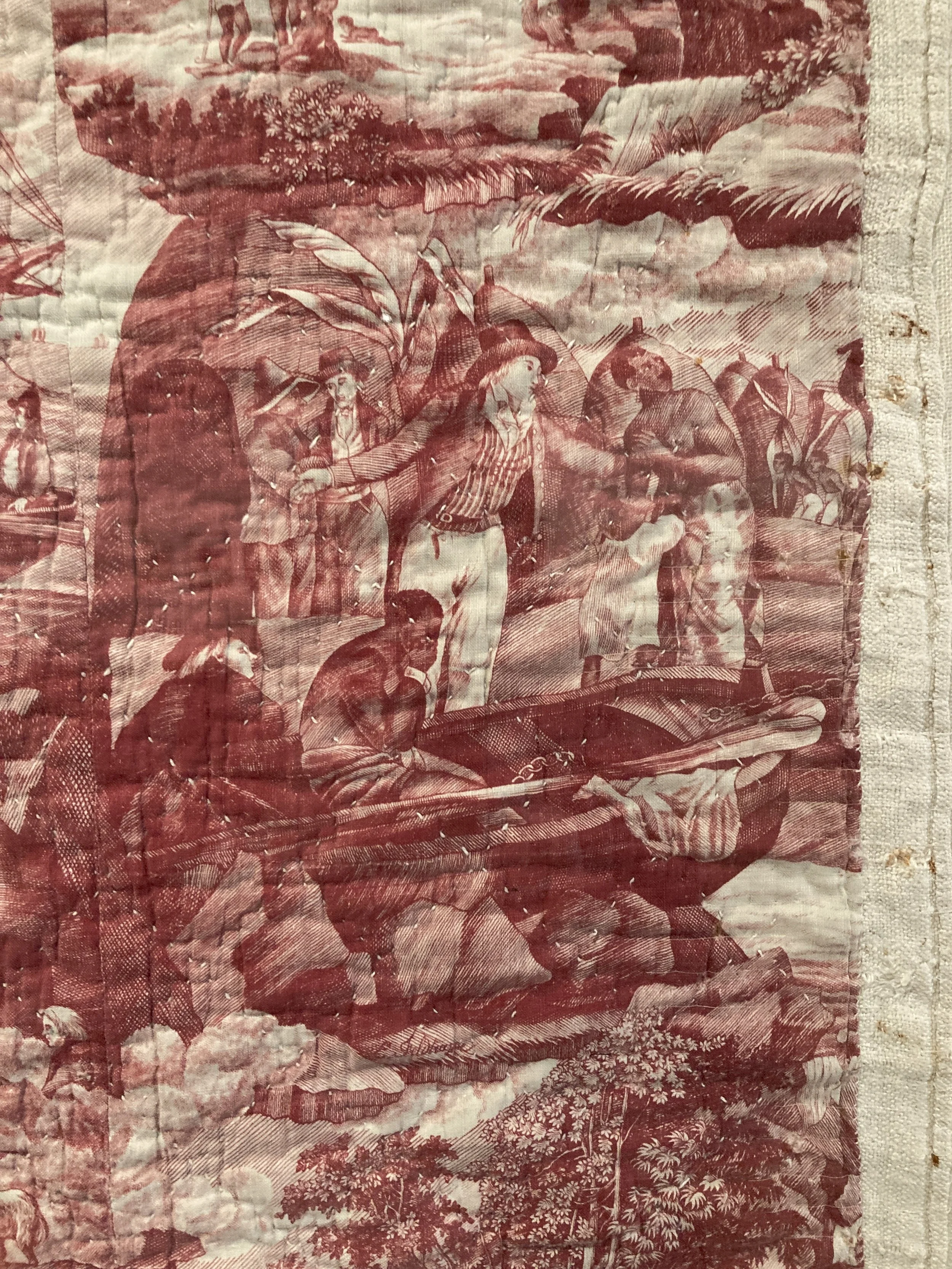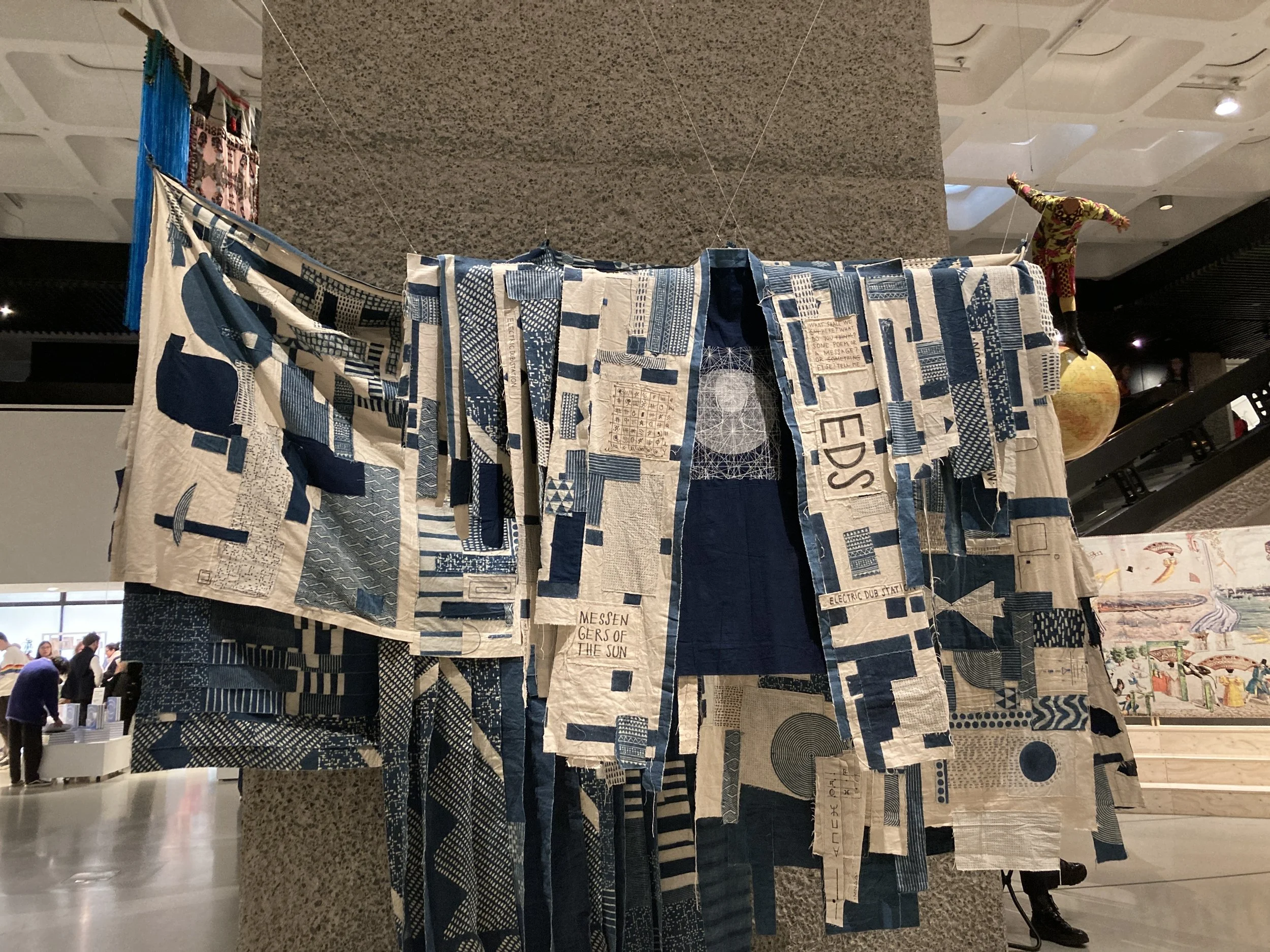Subverting the familiar
Domestic Dusters Project, 2023
A number of current textile artists use domestic items as the base for their work to make political points, they include @radicalembroider whose Covid-19 a Handkerchief project was well-observed and carefully made.
Another example is the Domestic Dusters Project curated by Vanessa Marr, who invited participants “to embroider their domestic thoughts, feelings, complaints, and celebrations as words or images onto a yellow duster.” Some of these dusters were on display at the 2023 Knitting and Stitching Show at Harrogate.
The dusters reminded of a piece of work that I loved at last summer’s Royal Academy Summer Exhibition, by Marie-Therese Dawes .
The medium chosen to convey the message was perfect. I observed many people smiling, and it received positive feedback on Instagram.
Whilst these examples use ordinary domestic materials to make political points, at a recent exhibition I came across more subtle examples of subversion.
Marie-Therese Dawes 2023
Hidden in plain sight
The Whitworth Art Gallery in Manchester currently has two exhibitions demonstrating how art, including textiles, can be used to convey powerful messages. Material Power Palestinian Embroidery demonstrates how a traditional textile practice has evolved over the past 100 years, with examples of work from across that time period, from the use of embroidery to enhance every day clothes, its politicisation in the 1970s, to its use by contemporary artists.
The second exhibition, Traces of displacement, was the outcome of a research project led by the University of Manchester which addresses forced displacement in the 20th and 21st centuries. The works in this exhibition reflect the experiences of artists and makers who had themselves been displaced, and also the experiences of advisors who have experienced displacement or who have a heritage of displacement. There were many moving items in the exhibition, but here I want to consider those that prompted me to think about the way art can be used to ‘hide in plain sight’.
Frédéric Etienne Joseph Feldtrappe (1786-1849, France) Traite des Nègres (The Slave Trade) 1815-20
The first is one of the older pieces in the exhibition, a piece of quilted cloth from the nineteenth century. Traite des Nègres (The Slave Trade) 1815-20 created by Frédéric Etienne Joseph Feldtrappe (1786-1849, France). From a distance this cloth looks like an example of toile de Jouy , a French cloth printed with monochromatic rural scenes. However closer examination shows scenes that highlight the brutality of the slave trade. Printed on cotton that was itself a product of slaves, it would have been displayed in the homes of those who supported abolition.
A more recent piece with a similar approach is a digital wallpaper print by Francesco Simeti (1968, USA). For Arabian Nights Simeti subverted a historic wallpaper design by using newspaper images of Afghan refugees to demonstrate how we can become desensitised to traumatic images (the Whitworth, 2023).
Francesco Simeti (1968, USA) Arabian Nights 2003
Digital wallpaper was also the medium used by Bashir Makhoul for Points of View (1998). It is not immediately obvious from a distance that the artwork is created using repeated images of battle-scarred walls, creating an impression of how it might be to be inside a building that may be attacked (again) at any moment.
Bashir Makhoul (1963, Palestine) Points of View 1998

















